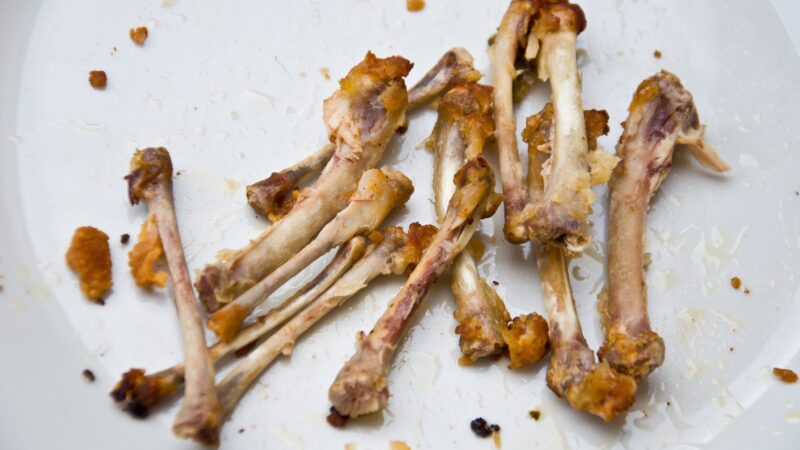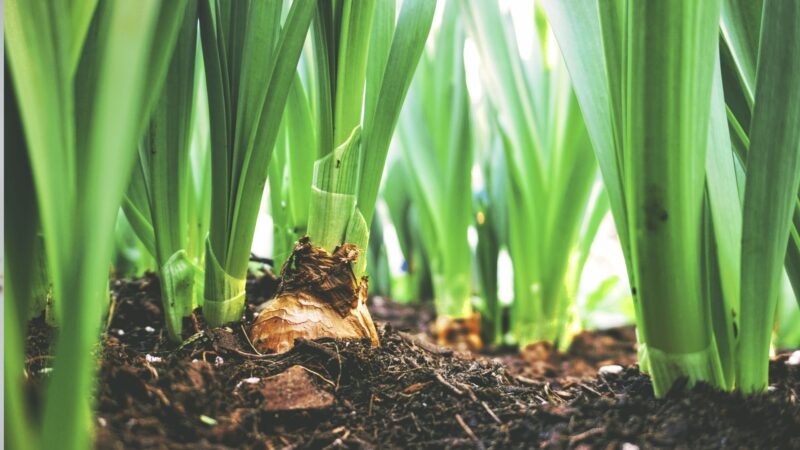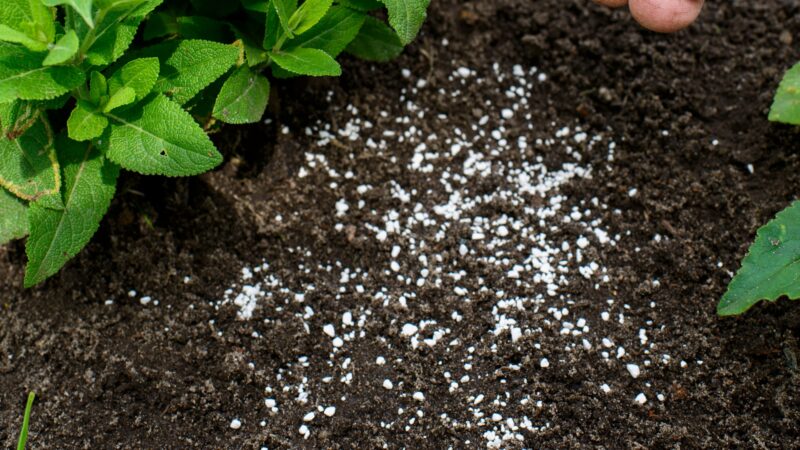Phosphorus is among the essential nutrients needed by plants to grow with vitality. Aside from aiding roots in their absorption of water, it also helps produce the plant’s energy unit.
With that said, there’s no doubt that all plants need phosphorus to thrive. And when it comes to fertilizers with a high phosphorus content, you can always rely on bone meal garden fertilizers.
Bone meal garden fertilizer is a type of fertilizer that’s made from crushed or powdered animal bones. Animal bones are an abundant source of phosphorus, making them a rich fertilizer once properly broken down into the soil.
If you want to know more about bone meal garden fertilizers, then you came to the right place. This article will introduce you to bone meal fertilizers, their pros, and cons, and enumerate the five best bone meal garden fertilizers in the market today. You’ll also learn how to use this type of fertilizer to make the most of it for your plants.
What Is Bone Meal?

Bone meal refers to a mixture made from defatted animal bones that have been crushed into pellets, granules, or powder. It contains high amounts of phosphorus and calcium, making it an excellent dietary supplement for animals and plants.
As a fertilizer, bone meal is considered a slow-release fertilizer since it takes a while to break down and be absorbed by the soil. It is also interesting to note that bone meal is not water-soluble. This means that it requires the soil to be acidic to be broken down properly.
Bone meal also contains low amounts of nitrogen, which aids in the photosynthesis of plants. With that said, there’s no denying that bone meal is an excellent fertilizer for your garden – especially if you have fruit-bearing and flowering plants.
Is Bone Meal a Good Fertilizer?
A bone meal is a good fertilizer. Bone meal contains phosphorus, calcium, and nitrogen – nutrients needed by plants in their daily processes to thrive.
It is known to strengthen roots, so it’s also the ideal choice for bulbs and root crops. Also, since it is a slow-release fertilizer, it delivers a steady flow of nutrients to the plants without burning the roots or overfeeding them.
Why Use Bone Meal for Plants?

There are a variety of reasons why you should use bone meal fertilizer for your plants. Aside from being a rich source of nutrients, bone meal is also organic.
This means that it doesn’t contain any chemicals, unlike most commercial fertilizers in the market. This reduces chemical pollution in the soil, and you can be assured that the produce is safe to consume.
Also, bone meal is usually in powder or granulated form. That makes them easy to mix with soil, so spreading it across your garden won’t be a problem.
What Garden Plants Like Bone Meal?
Bone meal fertilizer will benefit all plants. But considering its high phosphorus content, it is especially beneficial to flowering plants and root crops.
Specifically, flowering plants such as tulips, lilies, and roses have been observed to thrive when fed with bone meal. The same is the case for root crops such as carrots, onions, potatoes, radishes, and beets.
Benefits of Using Bone Meal Garden Fertilizer

Rich in phosphorus. Phosphorus helps harvest the sun’s energy and converts it into usable energy. Since the bone meal is rich in phosphorus, it’s a key component to ensure a strong root system for your plants. Phosphorus also helps with bloom and fruit production, so you’re bound to have a beautiful and bountiful garden.
High in calcium. Another benefit of using bone meal garden fertilizer is that it is rich in calcium. Bones have high calcium content, and this mineral helps strengthen cell walls to keep the plant free from pathogens.
Slow and steady delivery of nutrients. Bone meal fertilizer is a slow-release fertilizer. This means that it takes a while to decompose, and even by the time it has decomposed, it feeds the roots with just the right amount of nutrients so as not to cause overfeeding. This also ensures that the fertilizer won’t burn the roots.
Low waste. Bone meal garden fertilizer also benefits the environment by reducing waste. Instead of throwing out discarded bones from meals or slaughterhouses, crushing them as bone meal helps reduce environmental waste while also promoting plant growth.
Drawbacks of Using Bone Meal Garden Fertilizer
By itself, it is not balanced. Bone meal garden fertilizer is high in phosphate and calcium, but it only contains little nitrogen and usually no potassium. If your plant needs all other essential nutrients, you have to mix your bone meal with other fertilizers to balance it out.
May attract scavengers. Bear in mind that bone meal fertilizer is made of crushed animal bones. This has a strong scent that, if not properly mixed with soil, may attract scavengers. This will leave you with a garden with a dug-up plot and pulled-up plants.
Slow release. Another drawback of bone meal fertilizers is that it is not fast-release. This means that it takes months to decompose, so it is not instantly absorbed by the roots. If you need your fertilizer to be absorbed immediately by your plants, then the bone meal should not be in your options.
Not compatible with all soil types. It must also be noted that bone meal is not water-soluble. This means that it can only be broken down when the soil is slightly acidic. Thus, it will work only if the pH level of your soil is below 7.0.
How to Use Bone Meal Fertilizer?
To make the most of your bone meal fertilizer, you must know how to use it properly. That depends on where your seeds are planted.
1. Using bone meal fertilizer on garden beds. When it comes to using bone meal fertilizer directly on your garden bed, a good rule to follow is to spread one pound of bone meal for every ten square feet of soil.
With a spreader like the Scotts Whirl Hand-Powered Spreader, you start by sprinkling the area with fertilizer and make sure that the entire area is covered. Then, you mix it into the soil to make sure it is spread evenly.
- Handheld spreader: Perfect lawn spreader for small yards
- Usage: Great for year-round use to weed, seed, fertilize and salt
- Coverage: Hand spreader is engineered for smooth, even coverage
- Operation: Adjustable arm support helps provide maximum comfort
- Capacity: Holds up to 1,500 sq. ft. of product for year-round...
Mixing the bone meal into the soil not only pushes it down to be at the roots level once the seeds are planted, but it also masks its scent to avoid scavengers.
2. Using bone meal fertilizer on containers. Since containers are more compact, the ideal ratio is one tablespoon of bone meal per planting soil.
Then, you can use a trowel like the Fiskars 384220-1001 Ergo Garden Hand Trowel to mix the fertilizer thoroughly into the soil. Now your seeds are ready for planting.
- GARDENING ESSENTIAL: Heavy duty, ergonomic hand trowel ideal for...
- MAXIMUM POWER AND PRECISION: Cast-aluminum head boosts power for...
- LONG-LASTING AND RELIABLE: Polished aluminum head stays sharp...
- QUALITY GARDEN TOOLS: Designed to help you cultivate a better...
- INCLUDES: 1 Fiskars Ergo Trowel with hang hole; Lifetime Warranty
In both of these setups, make sure to use slightly acidic soil. The acidity in the soil will help break down the bone meal to make it easier for the roots to absorb.
5 Best Bone Meal Garden Fertilizer
1. Jobe’s Organics 09326, Plant Food, Bone Meal
- Package contains 4 pounds organic bone meal plant fertilizer...
- Bone meal fertilizer is formulated with a 2-14-0 NPK to provide...
- Jobe's organic bone meal fertilizer contains no synthetic...
- Application is simple and should be done every 8 weeks or as...
- Jobe's organic fertilizer is easily measured to provide the right...
If you’re looking for an OMRI-registered bone meal garden fertilizer, then look no further than Jobe’s Organics 09326 Plant Food Bone Meal. With this bone meal fertilizer, you can be certain that it’s made from organic matter to further promote your organic gardening.
It has an NPK content of 2-14-0, and the high phosphorus content makes it great for flowering plants, vegetables, bulbs, and tubers. It’s also formulated to ensure strong root systems for healthier plants – so expect your garden to thrive with the Jobe’s Organics 09326 Plant Food Bone Meal.
It’s also worth noting that this bone meal fertilizer is granulated. This reduces the chance of dusting – which is quite common when the fertilizer is in powder form. But despite being granulated, it is still quite easy to spread throughout your garden.
2. Nectar for The Gods Herculean Harvest Liquid Bone Meal
With such a promising name, it’s a good thing that the Nectar for The Gods Herculean Harvest Liquid Bone Meal does provide plants with a sturdy root system and rich foliage.
This bone meal fertilizer comes in liquid form, allowing you to easily feed it to your plants. This also allows the roots to absorb the nutrients faster, so your plants can benefit from them faster than those in powder or granulated form.
Aside from phosphorus, the Nectar for The Gods Herculean Harvest Liquid Bone Meal is also rich in calcium phosphate. This compound helps carry the nutrients found in the soil to your plant so it grows healthier and stronger. It’s also rich in calcium, which helps strengthen cellular walls to ward off pathogens.
And for your convenience, it comes with a dropper to make sure you never overfeed your plants.
So without a doubt, this Herculean bone meal garden fertilizer strengthens your plants while also giving them added protection from diseases.
3. Miracle-Gro Nature’s Care Organic Bone Meal
- Builds a strong frame starting from the roots
- Just a little shot of phosphorus works wonders in the garden for...
- Gives your bulbs, flowers and roses the extra pick-me-up that...
- Promotes vigorous roots and blooms
- OMRI listed for organic use
Another organic option to consider is the Miracle–Gro Nature’s Care Organic Bone Meal. It contains just the right amount of phosphorus to balance out all the other nutrients found in the soil.
This also guarantees that it won’t lead to an overfeeding of phosphorus, which is the usual culprit for yellowing leaves and stunted growth.
The Miracle–Gro Nature’s Care Organic Bone Meal is specially formulated to strengthen your plants’ roots to give them a strong frame. This results in a healthy plant that can support thick foliage, beautiful blooms, and juicy fruits.
It’s also worth noting that the Miracle–Gro Nature’s Care Organic Bone Meal is OMRI-registered. So if you’re looking for a powdered bone meal fertilizer for your organic garden, then this is the perfect choice for you.
4. Burpee Bone Meal Fertilizer
- STRONGER ROOT DEVELOPMENT: Bone Meal is a natural source of...
- ADD TO SOIL: Add to soil or potting mix during seed starting or...
- ORGANIC CERTIFIED: OMRI listed for organic gardening, Bone Meal...
- IDEAL FOR FALL BULB PLANTING: Bone meal naturally promotes...
- Since 1876: Generations of customers have trusted Burpee to...
Burpee has been a trusted brand when it comes to gardening since 1876, so it’s no surprise that their bone meal fertilizer is one of the best options in the market today.
The Burpee Bone Meal Fertilizer is an OMNI-registered option, making it ideal for those growing organic gardens. Since it is a slow-release fertilizer, it is best applied during the seed starting stage to make sure it’s ready by the growing and harvesting seasons.
Also, this bone meal fertilizer is specially formulated for strengthening roots and growing bulbs. It’s also high in calcium, giving your plants a strong structure for future seasons.
5. Down to Earth Organic Bone Meal Fertilizer
- Down to Earth Bone Meal is a five pound box of all natural...
- A wonderful source of readily available phosphorous and calcium...
- A quintessential, traditional organic fertilizer that promotes...
- Strong root development means plants will grow faster and be...
- As one of the three big nutrients for plants, phosphorous plays a...
If you’re planning to build an organic and eco-friendly garden, then the best option to consider is the Down to Earth Organic Bone Meal Fertilizer. Not only is it OMRI-registered, but it also uses 100% recyclable materials to make sure everything is safe for the environment.
This bone meal fertilizer has an NPK content of 3-15-0. This high phosphorus content helps build strong and sturdy roots to allow superior water absorption. And in turn, you can expect a bountiful harvest when you feed it to your plants. This is especially true for root crops like carrots and potatoes.
Also, the Down to Earth Organic Bone Meal Fertilizer contains 18% Calcium. Aside from helping improve soil texture, Calcium also serves to improve the quality of your fruits and flowers. This ensures a garden with beautiful blooms and plump and juicy fruits.
How to Make Bone Meal Fertilizer at Home?
By making your bone meal fertilizer at home, you’re assured of the quality of the materials that go into your fertilizer. Fortunately, it’s easy to make bone meal fertilizer from home. Just follow the simple steps below and you’re good to go.
Step 1: Collect the bones. The first step is to collect the bones you will be using for your bone meal fertilizer. You may either buy bones from slaughterhouses or use the ones you have collected from your previous meals.
To make bone meals at home, stick to smaller bone pieces, such as those from chicken or turkey.
Also, if you intend to produce a lot of bone meal fertilizer, make sure to collect a lot of bones because once you’re done with the entire process, you won’t have a lot left.
Step 2: Prepare the bones. Once you have collected the bones, you have to clean them thoroughly to make sure only the bone remains. If the bones still have meat and marrow, these may delay their decomposition. As a result, it may not break down in time for the growth of the roots.
Once you’re done cleaning the bones, you should also boil them for about an hour. The heat from the boil will not only separate the meat from the bones, but it will also melt the marrow away from the bones.
Step 3: Dry the bones. After you’re done cleaning the bones, it’s time to let them dry. Once the bones are dry, grinding them into smaller pieces will be easier.
To dry the bones, bake them in the oven for three hours. If you used bigger bones, you may have to bake them for longer periods. Also, make sure the oven has been preheated to at least 284°F to make sure it dries out thoroughly.
Step 4: Break and crush the bones. Once the bones are dry, you can now break them into smaller pieces. You can do so with a metal mallet like the AOWOTO Meat Tenderizer Hammer Mallet.
- PERFECT ERGONOMIC DESIGN - A balanced design that allows the...
- MULTIFUNCTIONAL DOUBLE SIDED MALLET style - Use the smooth flat...
- Dishwasher safe. Recommend wash by hand ! SOFT RUBBER HANDLE...
- MORE THAN A TENDERIZER: Crush ice for cocktails, loosening frozen...
- SATISFACTION & QUALITY for any issue .
But before you do so, make sure that you sterilize the surface before placing the bones there. Otherwise, you might contaminate the bone meal.
Once you’re comfortable with the size of your bone meal, you can start grinding them into smaller granules or even into fine powder. The end product all depends on your preference.
If you used small bones, you may opt to grind the pieces manually with a mortar and pestle. The ChefSofi Mortar and Pestle has a 2-cup capacity which is enough for small bones,
- A kitchen must-have: Mortar and pestle set (mortero de cocina -...
- Versatile tool: Take advantage of your brand new stone motar and...
- Effortless use: This ChefSofi stone mocajetes motor & pedestal...
- Quick cleaning & zero kitchen messes: As granite is inherently...
- Satisfaction guarantee: We want you to be absolutely elated with...
Can Bone Meal Be Used on All Plants?
Bone meal fertilizer can be used on all plants. It is especially useful to flowering and fruit-bearing plants and trees due to its high phosphorus content.
Will Bone Meal Pollute Water Sources?
A bone meal may pollute water sources, but only if it is used in high amounts. In this case, it may cause nutrient pollution to water sources. However, bone meal is usually applied in minimal amounts so plants can absorb them without the excess seeping into water sources.
Is Bone Meal Fertilizer Toxic?
Bone meal fertilizer is not toxic. However, if it is ingested by animals and humans in large quantities, it may lead to gastrointestinal issues.
Can Too Much Bone Meal Kill Plants?
Too much bone meal may cause harm to your plants. While it may not instantly kill your plants, it may lead to overfertilization which causes stress to your plants.
When a plant is fed with too much phosphorus, it may suffer from stunted growth – which is the opposite of what you are aiming for.
List of Sources
Bone Meal – https://www.urmc.rochester.edu/encyclopedia/
Should I Use Bone Meal When Planting My Spring Flowering Bulbs?
Organic Fertilizers – https://cmg.extension.colostate.edu/Gardennotes/234.pdf








